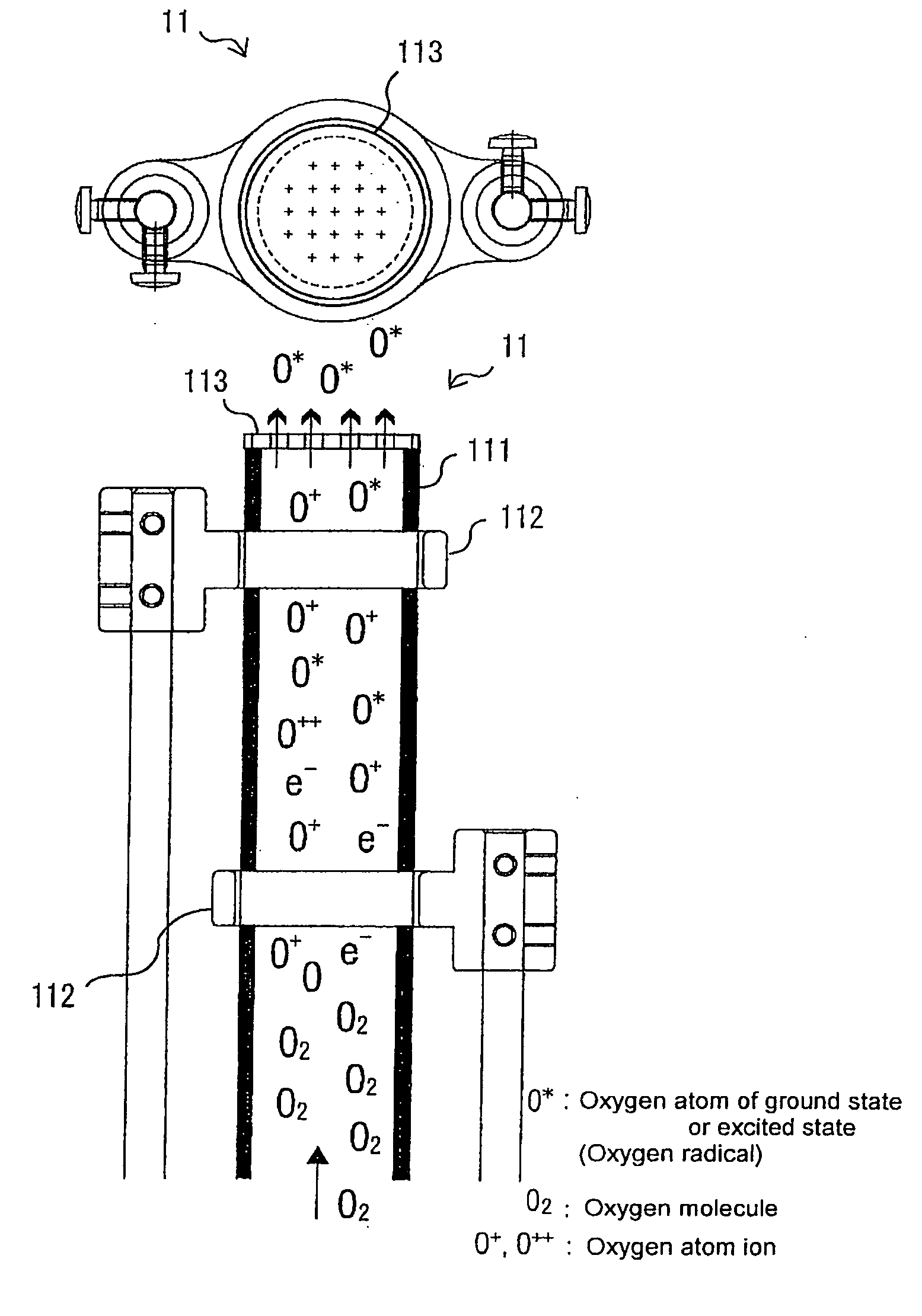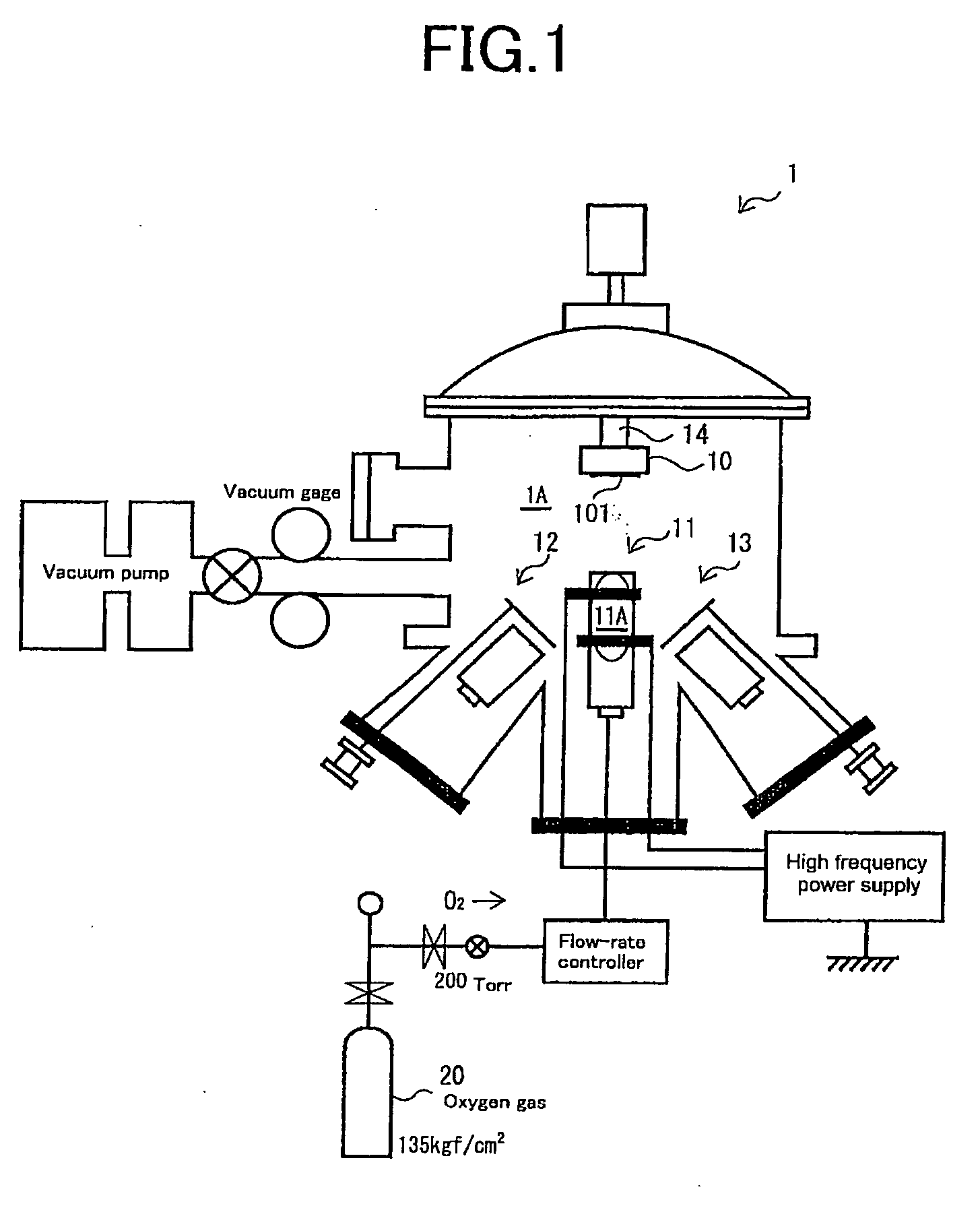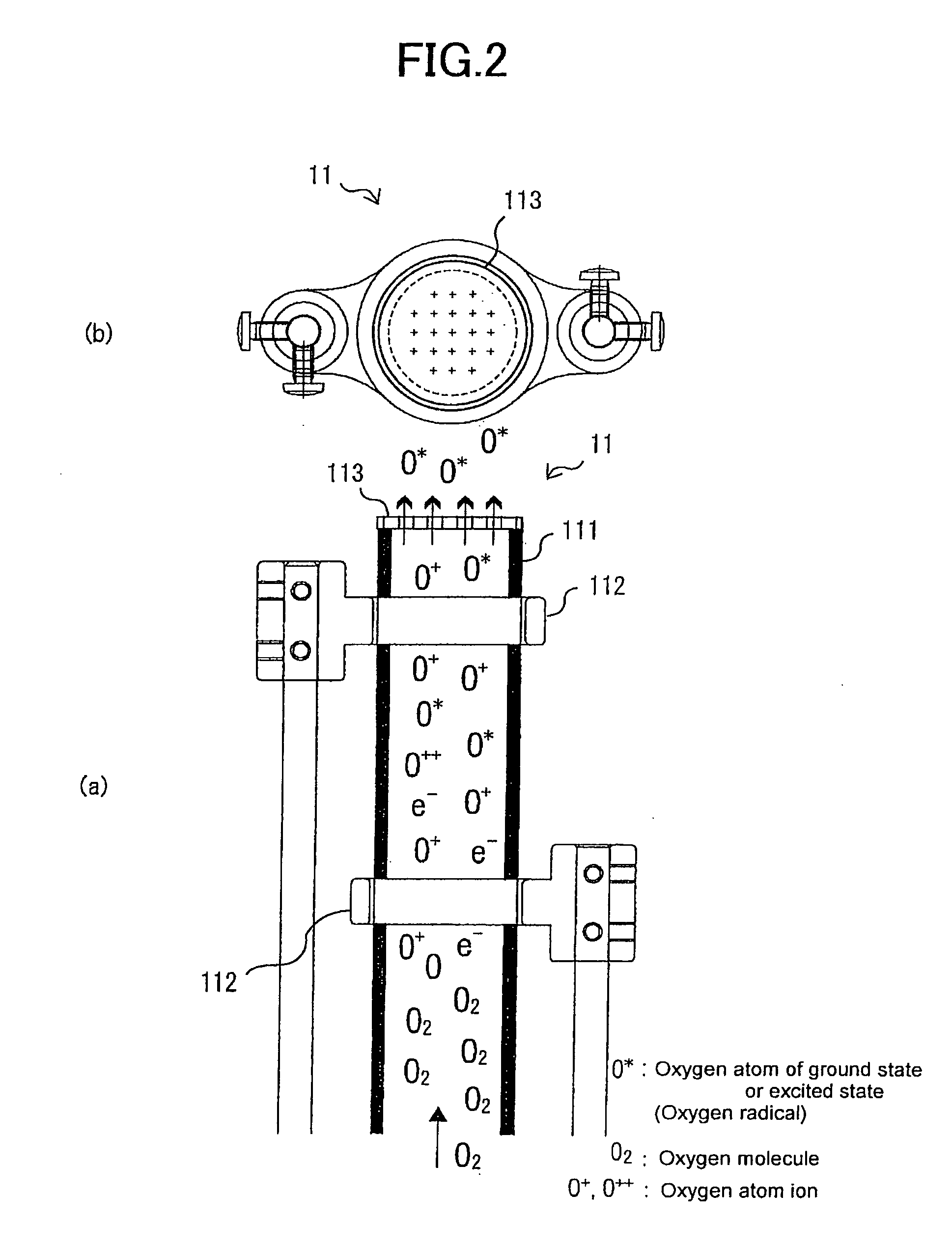Method and apparatus for manufacturing a zinc oxide thin film at low temperatures
a zinc oxide and low temperature technology, applied in plasma technology, vacuum evaporation coating, transportation and packaging, etc., can solve the problems of remarkable non-uniformity, high price of zinc oxide, and film non-uniform electric resistivity, so as to reduce the electric resistivity, facilitate plasma generation, and control freely and readily
- Summary
- Abstract
- Description
- Claims
- Application Information
AI Technical Summary
Benefits of technology
Problems solved by technology
Method used
Image
Examples
example 1
[0067]FIG. 4 illustrates an appearance of a prototyped oxygen plasma cell. The oxygen plasma cell is made of a silica tube of height 300 mm, inner diameter of 26 mm, outer diameter of 30 mm and thickness of 2 mm, and provided in the upper portion with twenty-one oxygen radical injecting fine holes 113 each with a diameter of 0.2 mm to inject the oxygen plasma.
[0068]FIG. 5 shows graphs illustrating simulations of electric field strength distribution and potential distribution when the distance between ring-shaped discharge electrodes is varied. In addition, as physical properties used in the simulations, the dielectric constant of oxygen is 1.0005, the dielectric constant of silica is 3.8, the dielectric loss factor is 0.0001, the electric resistivity of copper is 1.55×10−8 Ωcm, and a potential difference of 735 volts is applied between the ring-shaped electrodes 112.
[0069] The potential and electric field strength along the center axis of the cell are as show...
example 2
(Formation of the Zinc Oxide Thin Film on a Glass Substrate)
[0071]FIG. 7 illustrates characteristics of zinc oxide thin films formed on glass substrates widely used as a transparent substrate. The films were formed while changing the temperature of the substrate to 420° C., 300° C., 150° C., 100° C., 80° C., 60° C. and 40° C. FIG. 7(a) is a photograph showing conditions of the film formed at each temperature. In the figure, numeric values in the upper right portion indicate the film forming temperature and film thickness. It has been shown that films formed at either of temperatures have sufficient transparency.
[0072]FIG. 7(b) is a graph showing light transmittance spectra for each film-forming temperature. It has been shown that the films formed at either of temperatures have a light transmittance of 80% to 90% or more in the visible region (from 380 nm to 770 nm).
[0073]FIG. 7(c) is a graph showing X-ray diffraction spectra of zinc oxide thin films. As shown in FIG. 7(c), the f...
example 3
(Formation of the Zinc Oxide Thin Film on a PET Substrate)
[0078]FIG. 10 illustrates characteristics of the zinc oxide thin film formed on a PET (Polyethylene terephthalate) substrate. The zinc oxide thin film with a thickness of 550 nm was formed with the temperature of the substrate set at 50° C. FIG. 10(a) is a photograph of the formed film, and as can be seen from the figure, the film shows sufficient transparency.
[0079]FIG. 10(b) is a graph showing the spectrum of light transmittance, and it has been shown that the light transmittance is 80% or more in the visible region. FIG. 10(c) is a graph showing the X-ray diffraction spectrum of the zinc oxide thin film. As shown in FIG. 10(c), the formed thin film has the ZnO (0002) diffraction peak at nearly 2θ=34.5 degrees, and it was recognized that the formed thin film is zinc oxide.
PUM
| Property | Measurement | Unit |
|---|---|---|
| Temperature | aaaaa | aaaaa |
| Temperature | aaaaa | aaaaa |
| Density | aaaaa | aaaaa |
Abstract
Description
Claims
Application Information
 Login to View More
Login to View More - R&D
- Intellectual Property
- Life Sciences
- Materials
- Tech Scout
- Unparalleled Data Quality
- Higher Quality Content
- 60% Fewer Hallucinations
Browse by: Latest US Patents, China's latest patents, Technical Efficacy Thesaurus, Application Domain, Technology Topic, Popular Technical Reports.
© 2025 PatSnap. All rights reserved.Legal|Privacy policy|Modern Slavery Act Transparency Statement|Sitemap|About US| Contact US: help@patsnap.com



